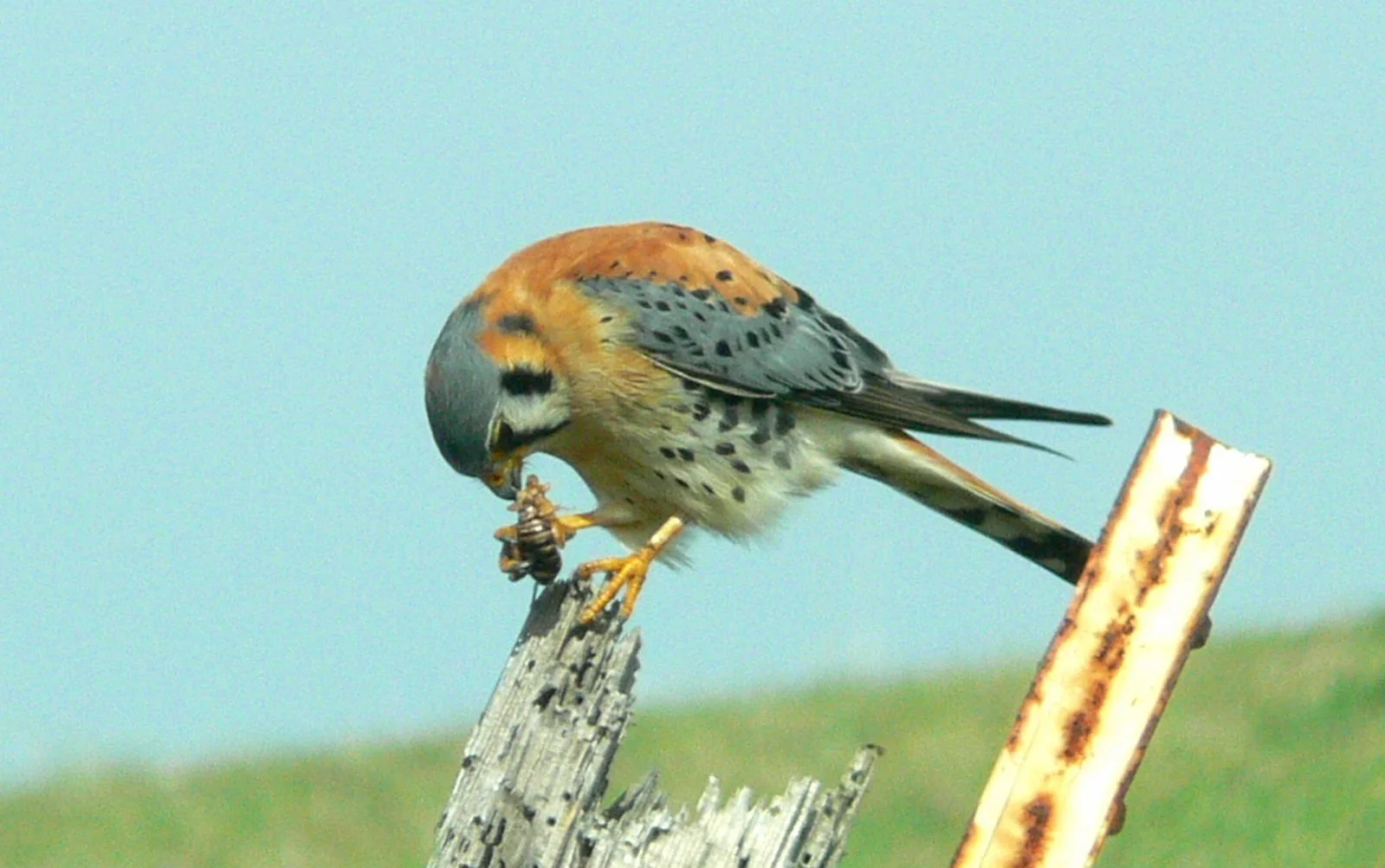By Linda Tanner from Los Osos, California, U.S.A. - American Kestrel With Big BugUploaded by berichard, CC BY 2.0.
American Kestrel
The American kestrel, once erroneously called the American sparrowhawk, is the smallest and most common falcon in North America.
About the size and shape of a Mourning Dove, kestrels differ in plumage according to sex: males have slate-blue wings; the wings of females are reddish-brown. Their backs are a warm, rusty brown (the odd word “rufous” often shows up when kestrels are described), speckled with black. The two black slashes on the sides of their faces are sometimes called a “mustache” and “sideburn.” American kestrels occupy a wide variety of habitats, including grasslands, deserts, and meadows, with a breeding range extending through North America into central Mexico and the Caribbean.
Most kestrels that breed in Canada and the northern U.S. migrate south in the winter. They generally hunt by perching and by scanning the ground, or by flapping into the wind to hover in place like a helicopter until they swoop down to snatch their prey (usually insects and small animals). The American kestrel is considered the most abundant falcon in North America, but its population is experiencing long-term, sustained declines, most rapidly in New England and coastal California.
What do you love about this particular creature?
What do they reveal to you about God and our faith?
See how Kestrel perches on a fence post or a telephone wire, scanning for prey. She is small and compact, with feathers that are blue-grey, black, and orange. We are startled by her beauty.
God allures us with beauty: we stop in our tracks to admire and rejoice. Kestrel’s beak is curved, and her talons are strong; she may be the tiniest of raptors, but she is fierce.
God’s Spirit is often represented as a dove, which we associate with something gentle, mild, and safe, but Kestrel reminds us that God cannot be tamed: God is as wild as a raptor, as undomesticated as a bird of prey. Ditch the indoor deity that we can manage and control; Kestrel speaks of a wilder, freer Spirit that calls us into the unknown.
When Kestrel spreads her wings and soars, our hearts soar with her.
Author - The Rev. Dr. Margaret Bullitt-Jonas
The Rev. Dr. Margaret Bullitt-Jonas is a priest, author, and climate activist who lives in western Massachusetts in the foothills of the Berkshires, not far from the Connecticut River.
God of moss and mountains, thank you for the diversity of creatures that praise you by their being. May we likewise show forth your glory with our bodies, hearts, and lives, in the name of your Son Jesus, the firstborn of Creation. Amen.
Prayer by Rev. Rachel Field
